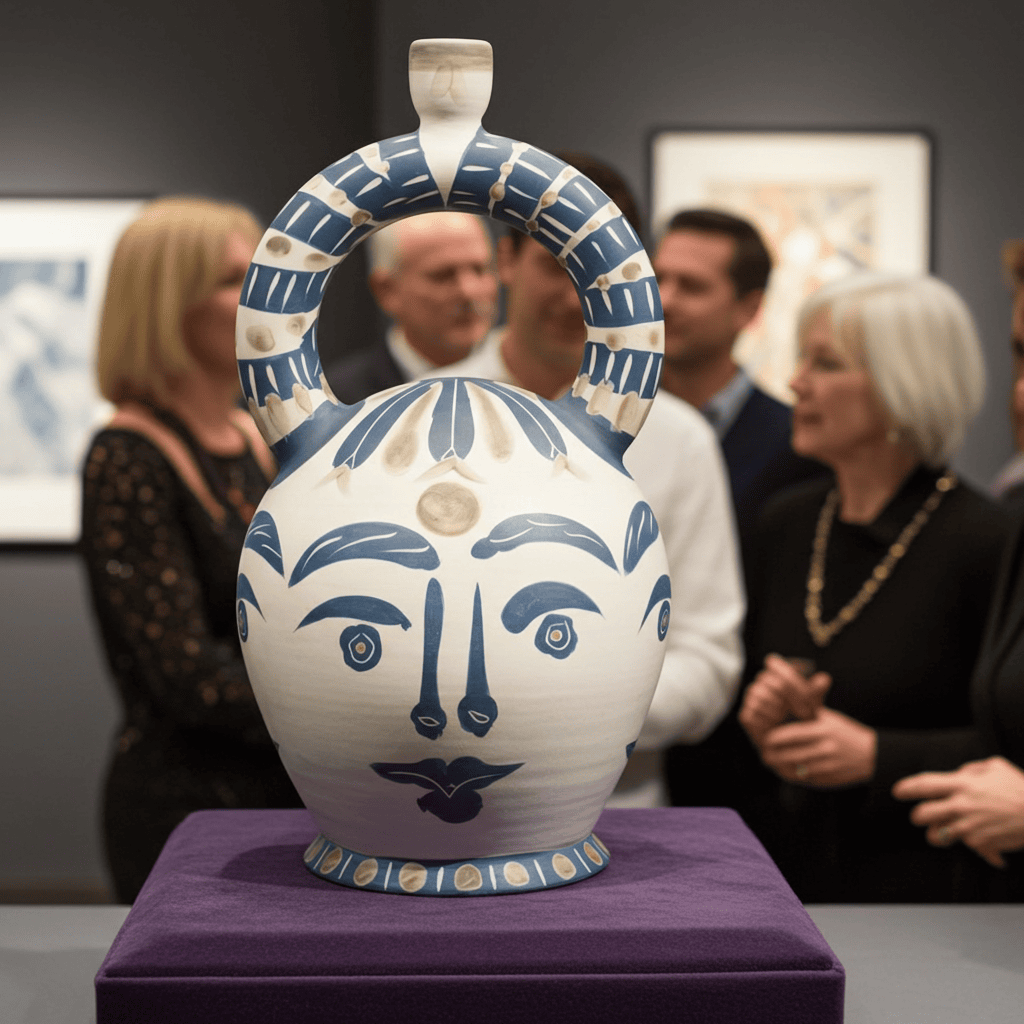Picasso’s love of printmaking first began with his discovery of etchings, and what drew Picasso to the medium was the complexity. Exploring the printmaking methods utilized by peintre-graveurs, he became fascinated with the process: the metal plate has to be cut down to the desired image by acid and other chemical processes and then the plate is inked and transferred onto a piece of paper which makes the final etching. A method that involves skill, craftsmanship, and dedication, Picasso embraced the medium vigorously.
Picasso first began to create etchings in the early 1900s following his move to Paris. In his trademark fashion, he pushed the boundaries of the etching medium, experimenting with the different possibilities and effects that etchings had to offer. Once he mastered the more traditional etching techniques, he began to experiment with the medium, incorporating dry point and aquatint into his etchings. He utilized these techniques to create distinct textural and tonal effects and added elements of color. To explain a little about the deviations, dry point is a technique in which a hard steel needle is used to incise lines directly in the metal plate, whereas aquatint is a technique used to produce several tones by varying the etching time of different areas of a metal plate so that the resulting print resembles the tint of an ink wash or drawing. Experimentations such as these drove Picasso to become so engrossed with etchings that he purchased his own printing press so that he could make them at his leisure.
Beginning his etching oeuvre is the celebrated Vollard Suite 1930-1937, a set of 100 etchings which are done in a neoclassical style. Named after Ambroise Vollard, the publisher of the suite, the Vollard Suite includes three etched portraits of Picasso’s close friend and confidant. The predominant theme of the Vollard Suite is the artist’s studio, though Picasso also conveys tempestuous images of mythological beasts (such as the minotaur), often captured amidst acts of violence. Picasso created this suite when he was involved in a passionate affair with the beautiful Marie-Therese Walter, one of his many great muses. Her classical features appear repeatedly in this series, perhaps offering insight into Picasso’s personal love life.
Following the Picasso etchings Vollard Suite, Picasso continued to create numerous etchings. He constantly experimented both with his subject matter and technique, creating etched still lifes, portraits, mythological scenes, and rich images highlighting his classical, cubist, and surrealist sensibilities. His personal life continued to inspire his graphic work, as he would often convey the many women that he became romantically involved with. During the mid 1900s, he created multiple etchings depicting his lovers Francoise Gilot and, later, Jacqueline Roque. Picasso’s 1961 etching Jacqueline Mariee captures the beauty and happiness that radiates from his new bride Jacqueline (Roque) as she becomes his second wife.
The value in Picasso’s etchings is that they highlight his masterful use of line and shadow which are not as dominant in his other mediums. From the previously mentioned series Vollard Suite (1930-1937) to his more colorful etching and aquatints such as Le Faune (1958) and Bacchanale (c. 1955), we are able to see his remarkable ability to depict a rich sense of expression and atmosphere. Picasso’s attention to detail, imagery, and fearlessness exemplify his mastery of the etching medium, earning him a place as one of the most accomplished masters of the graphic arts of the 20st century.



